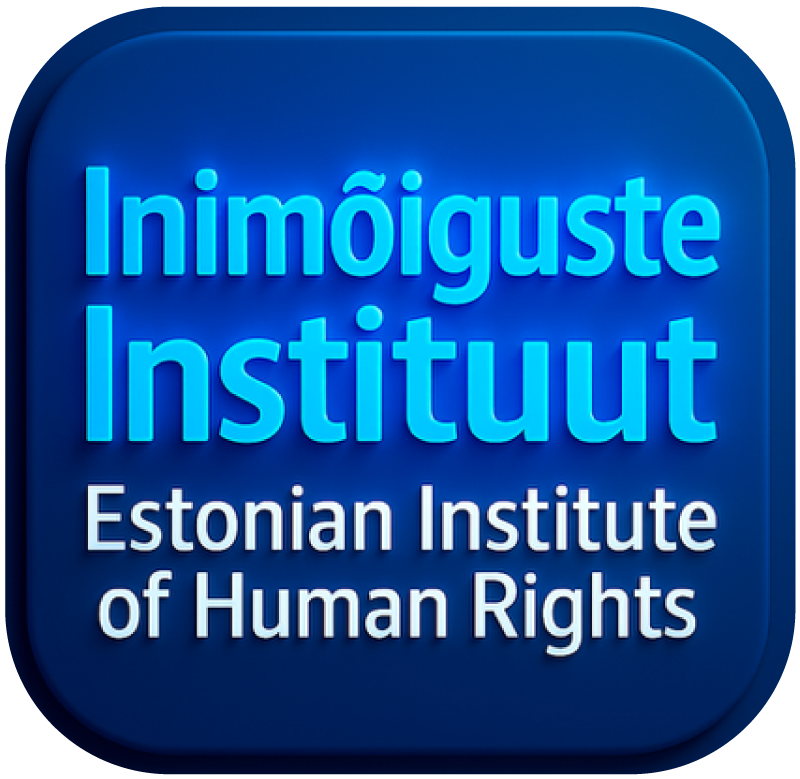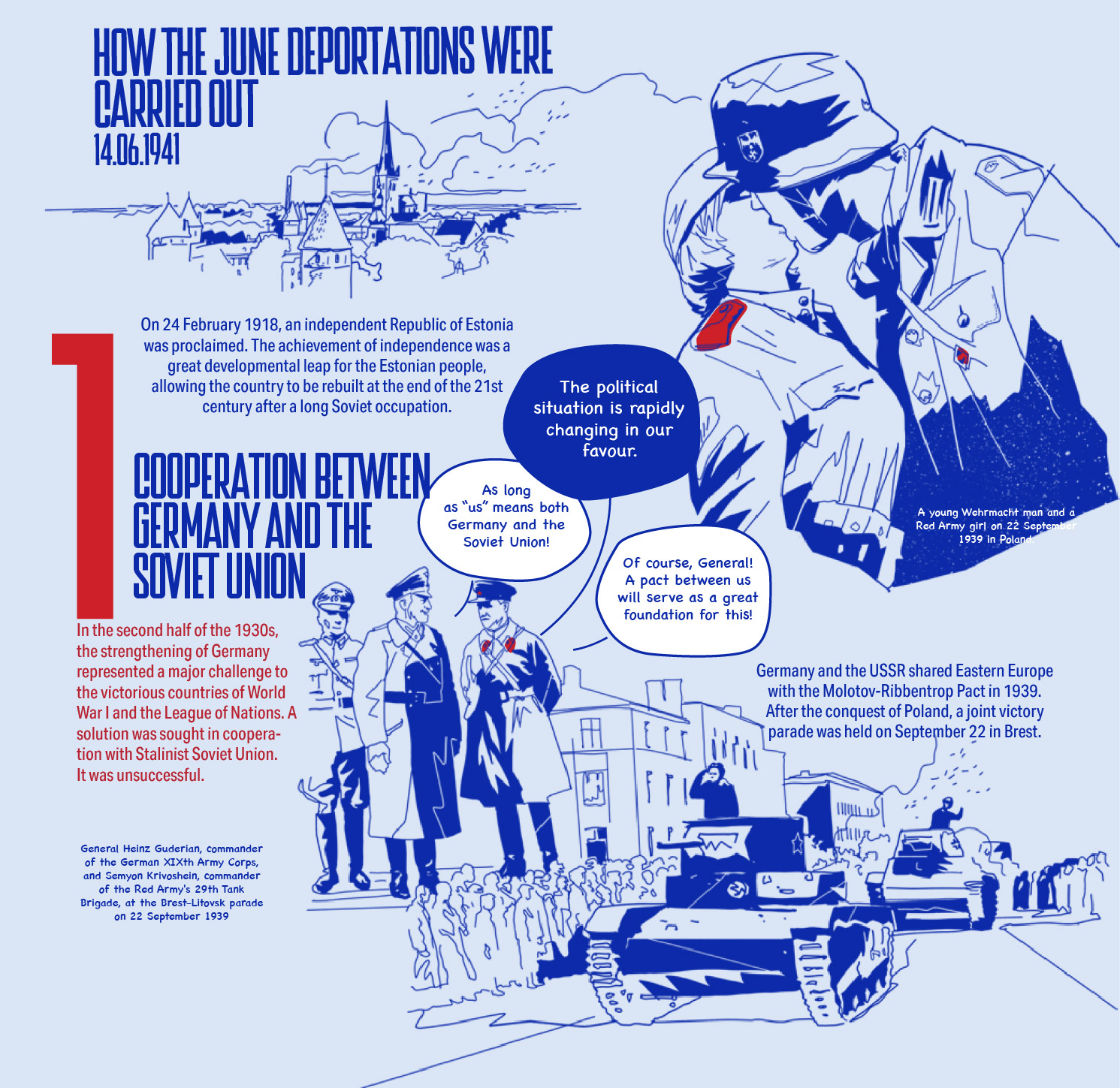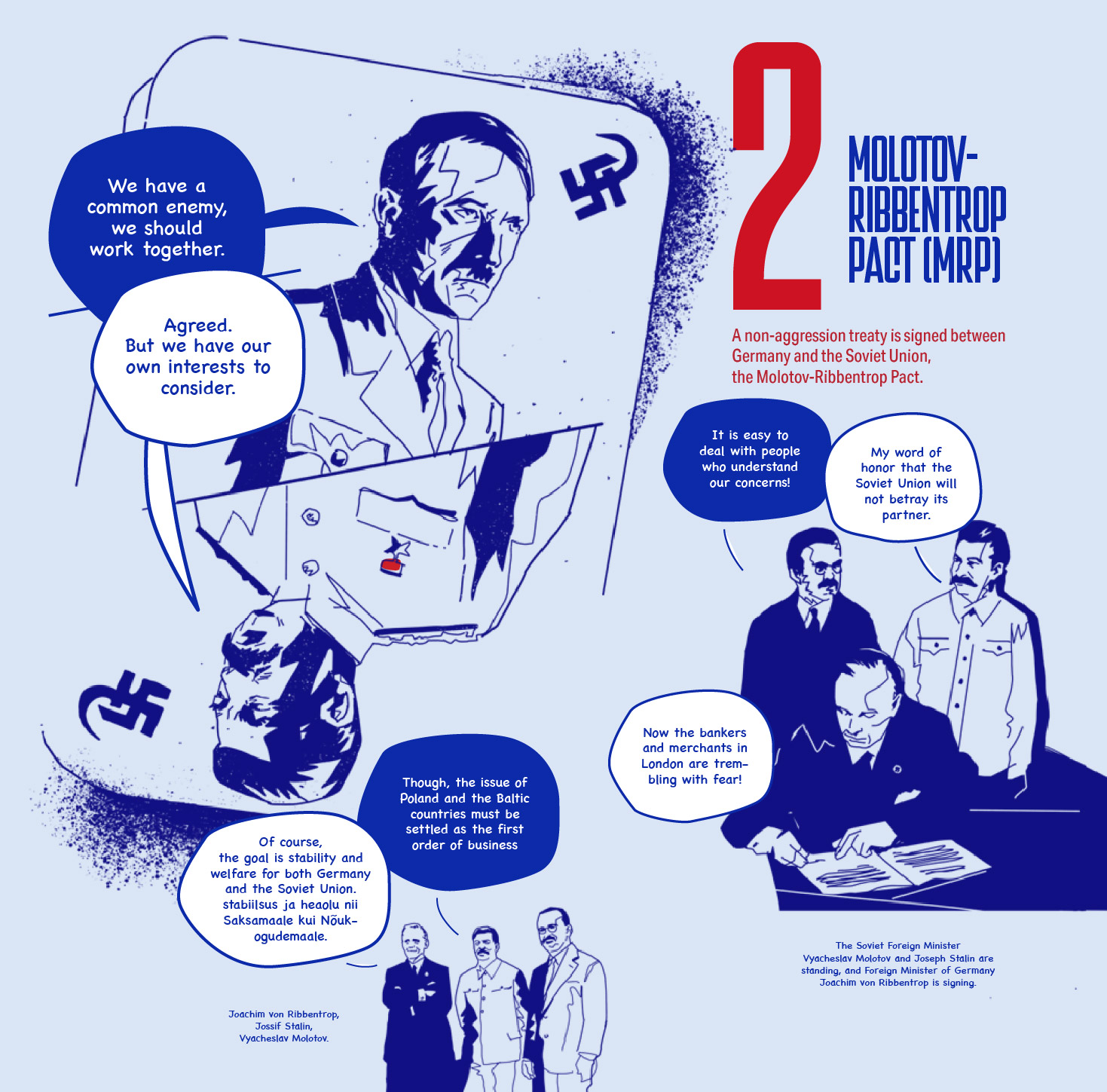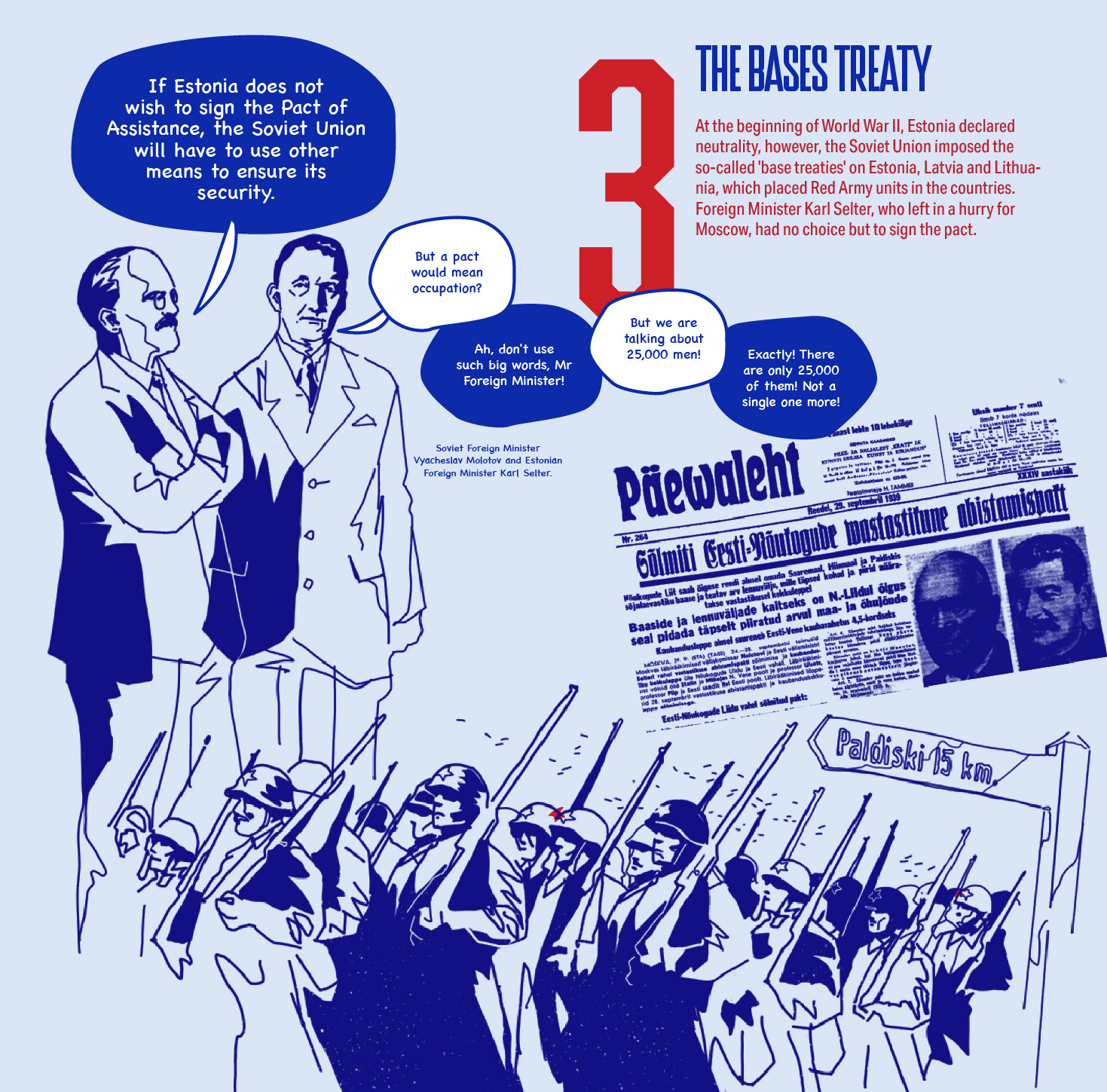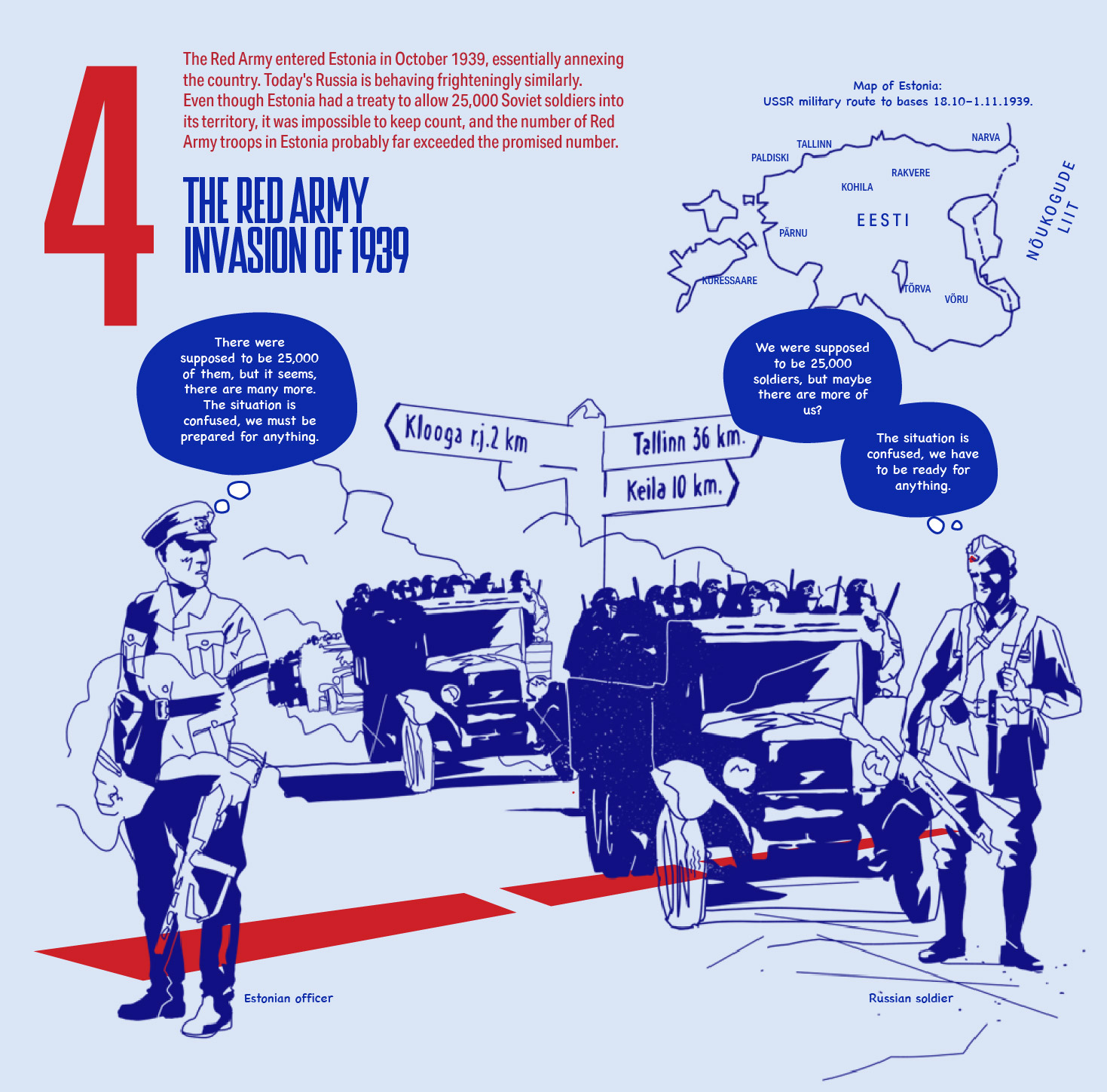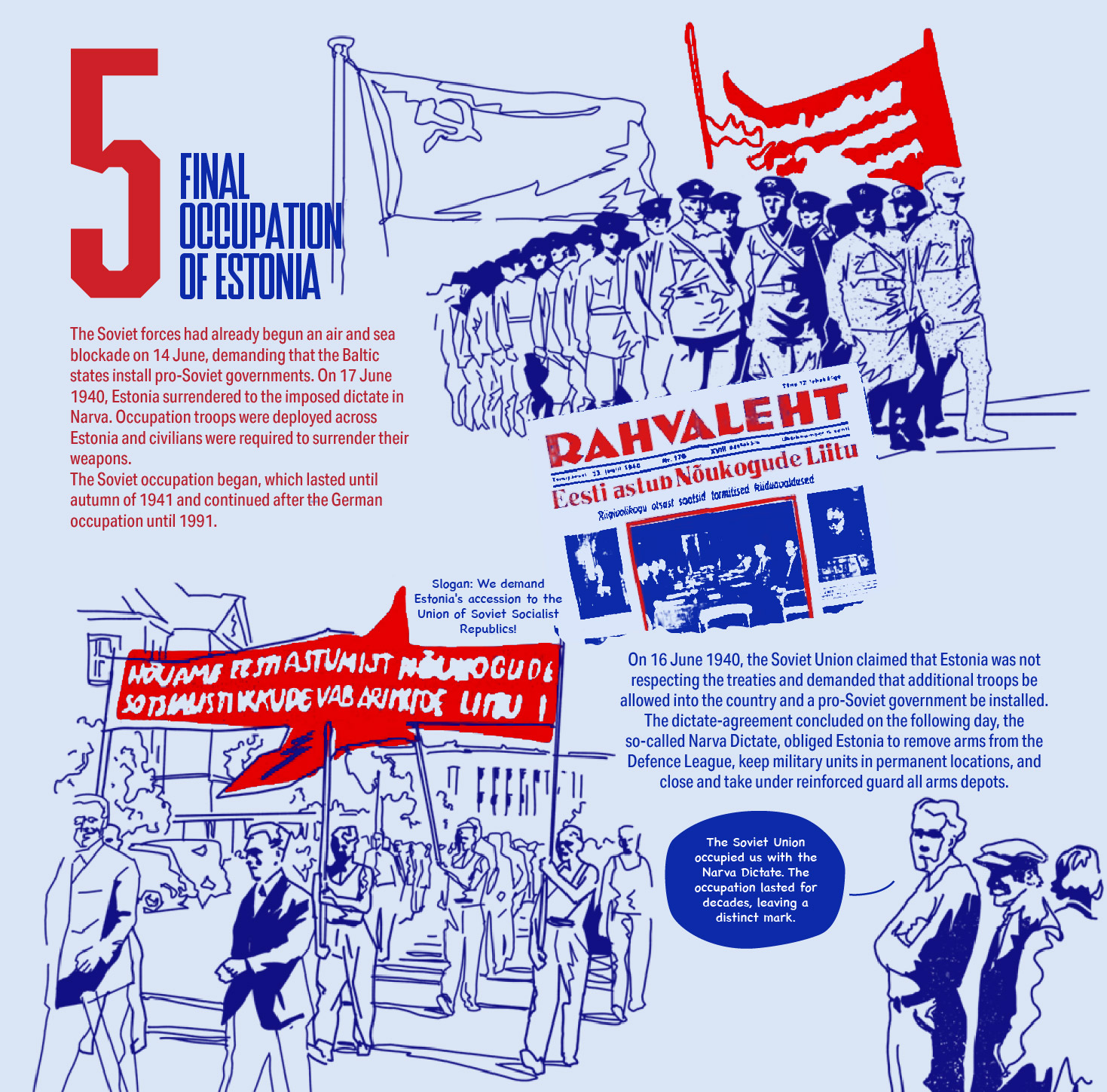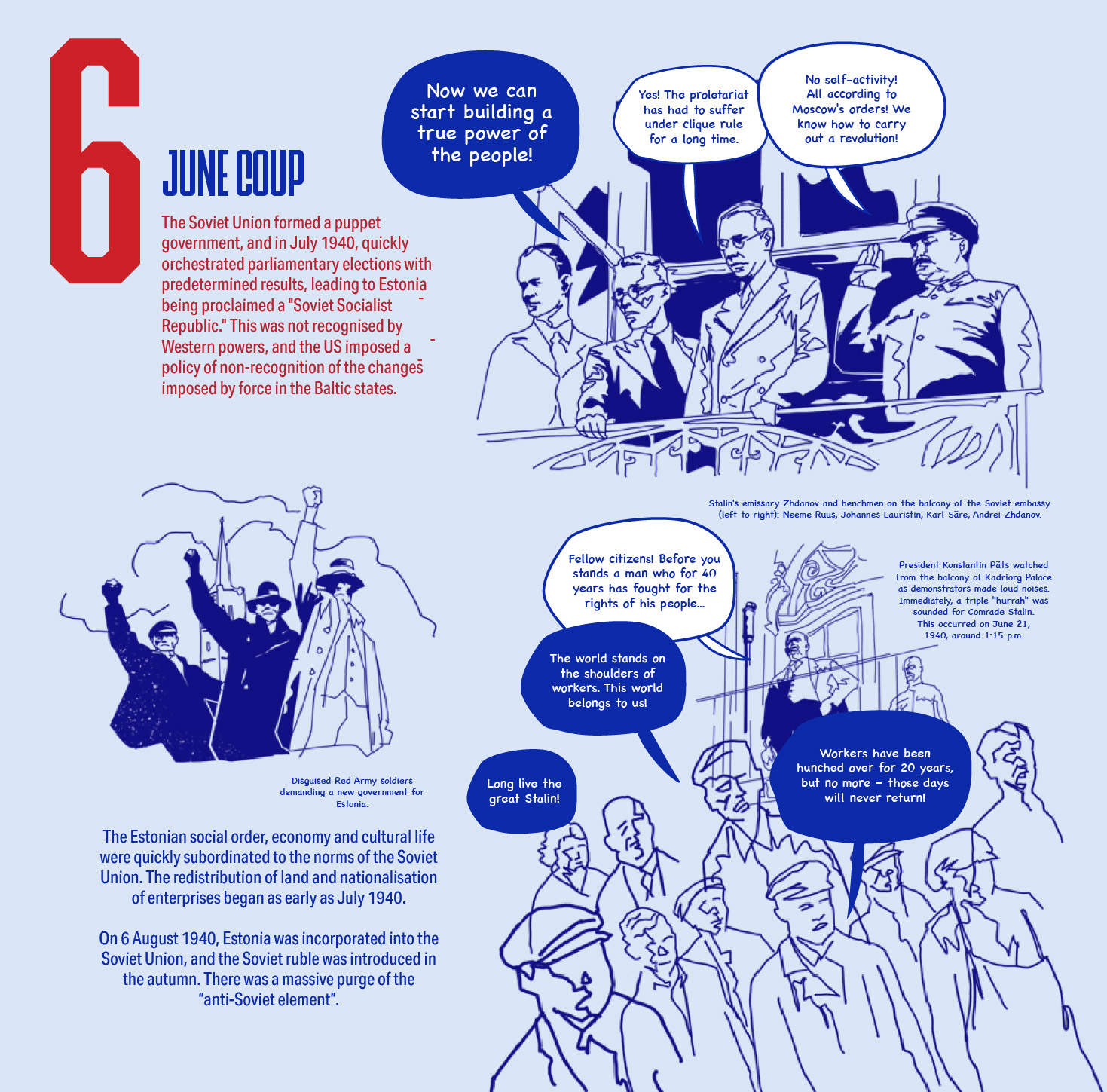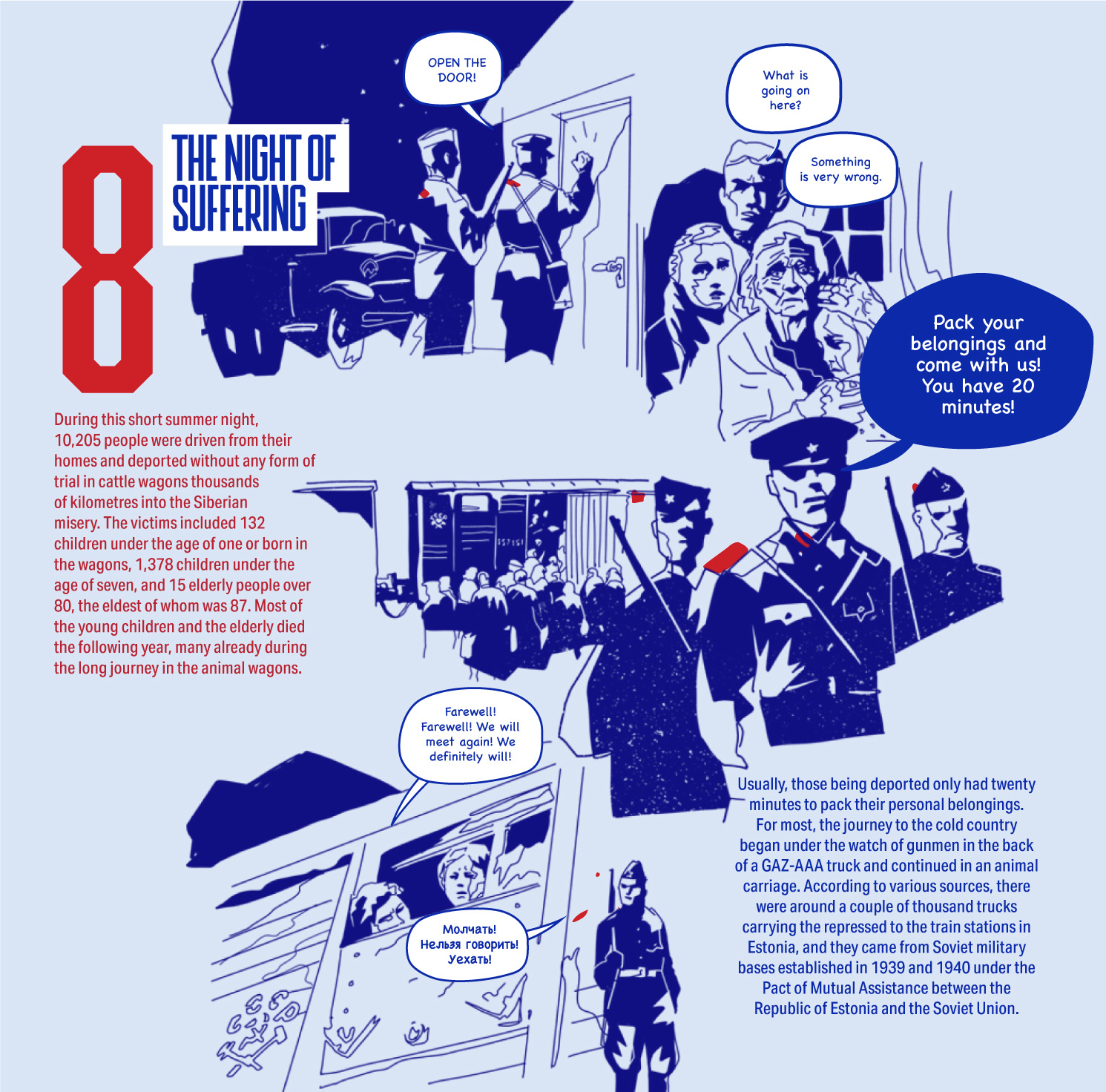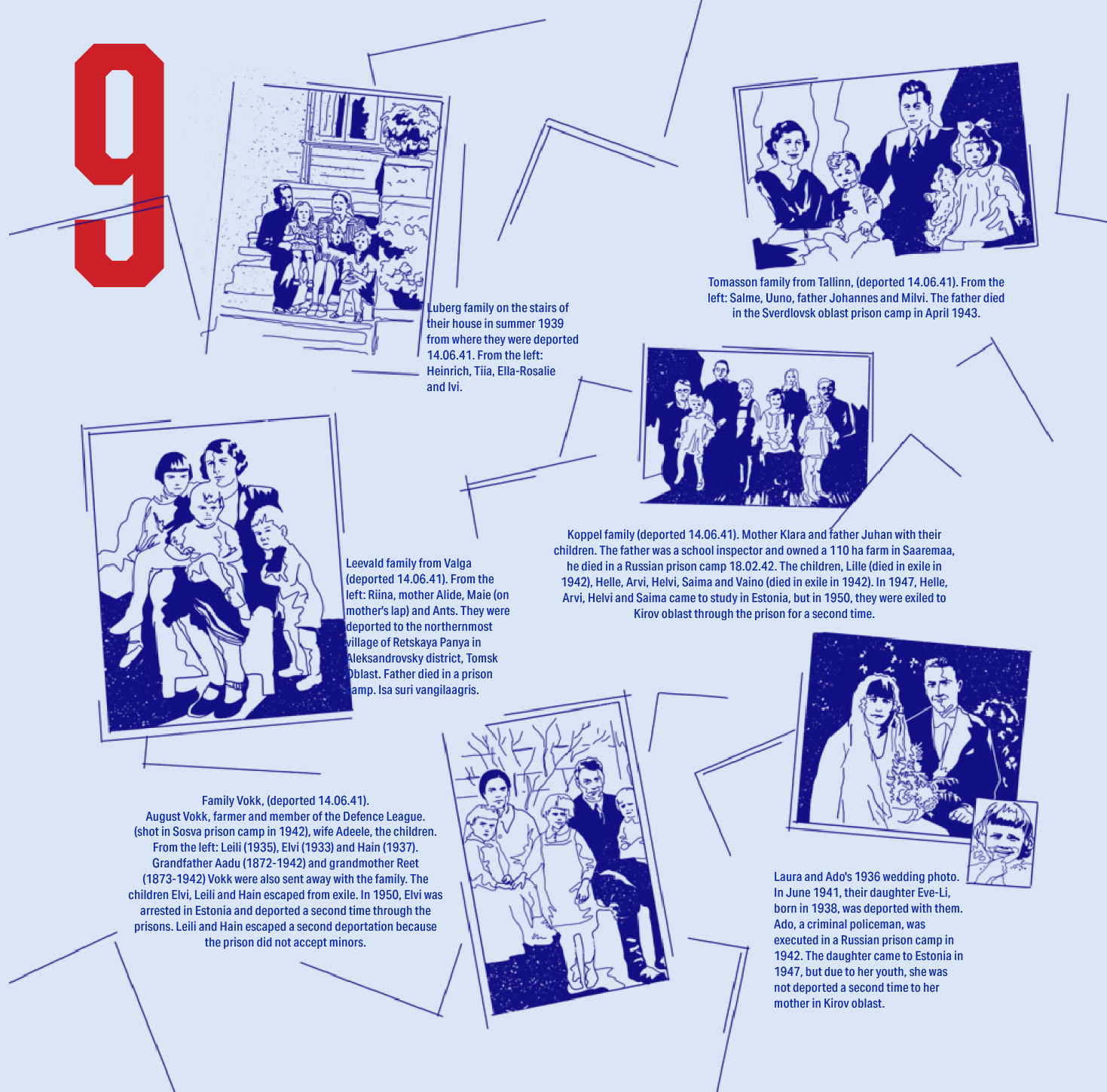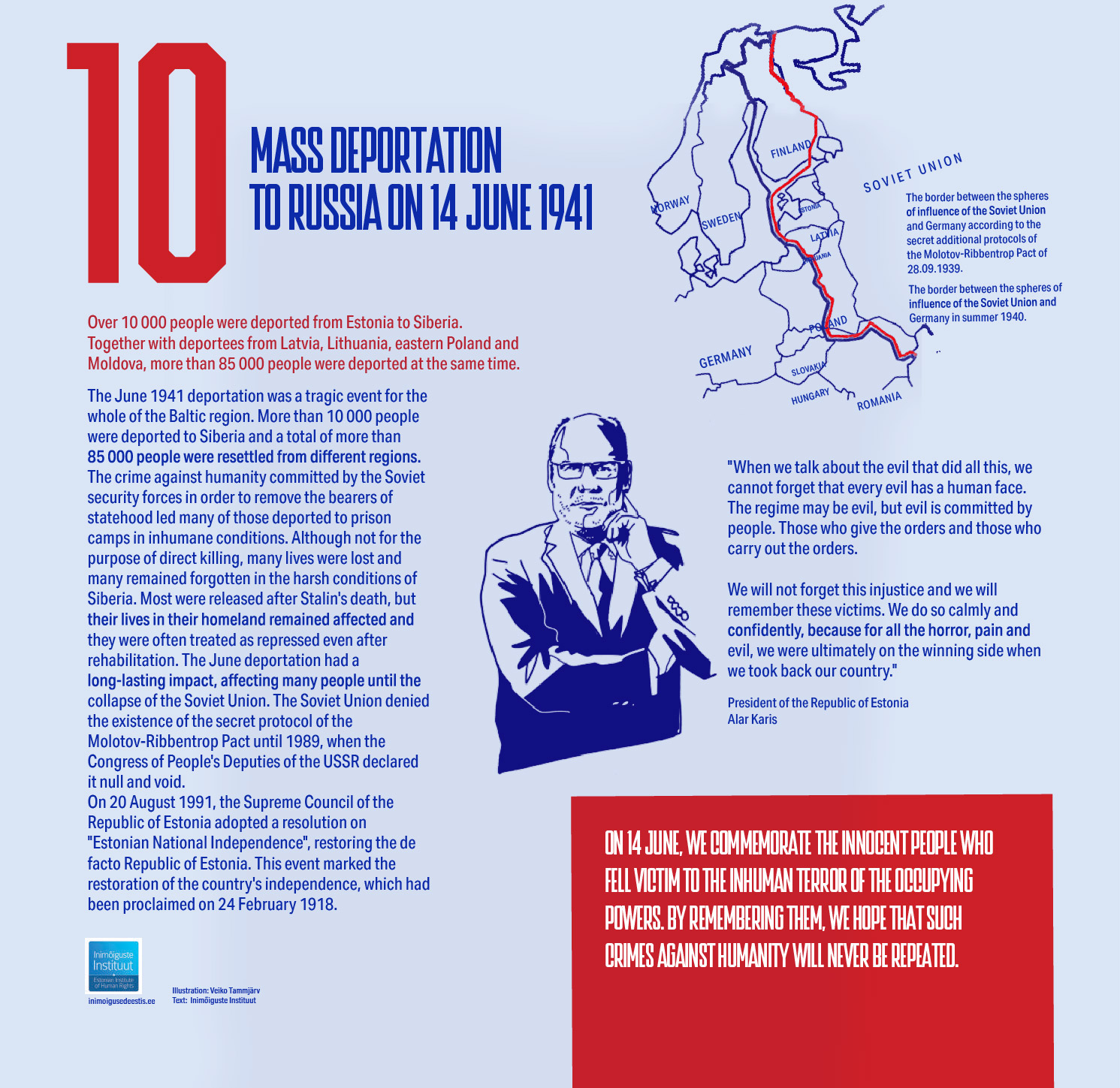June deportation memorial 2025
14. June 1941
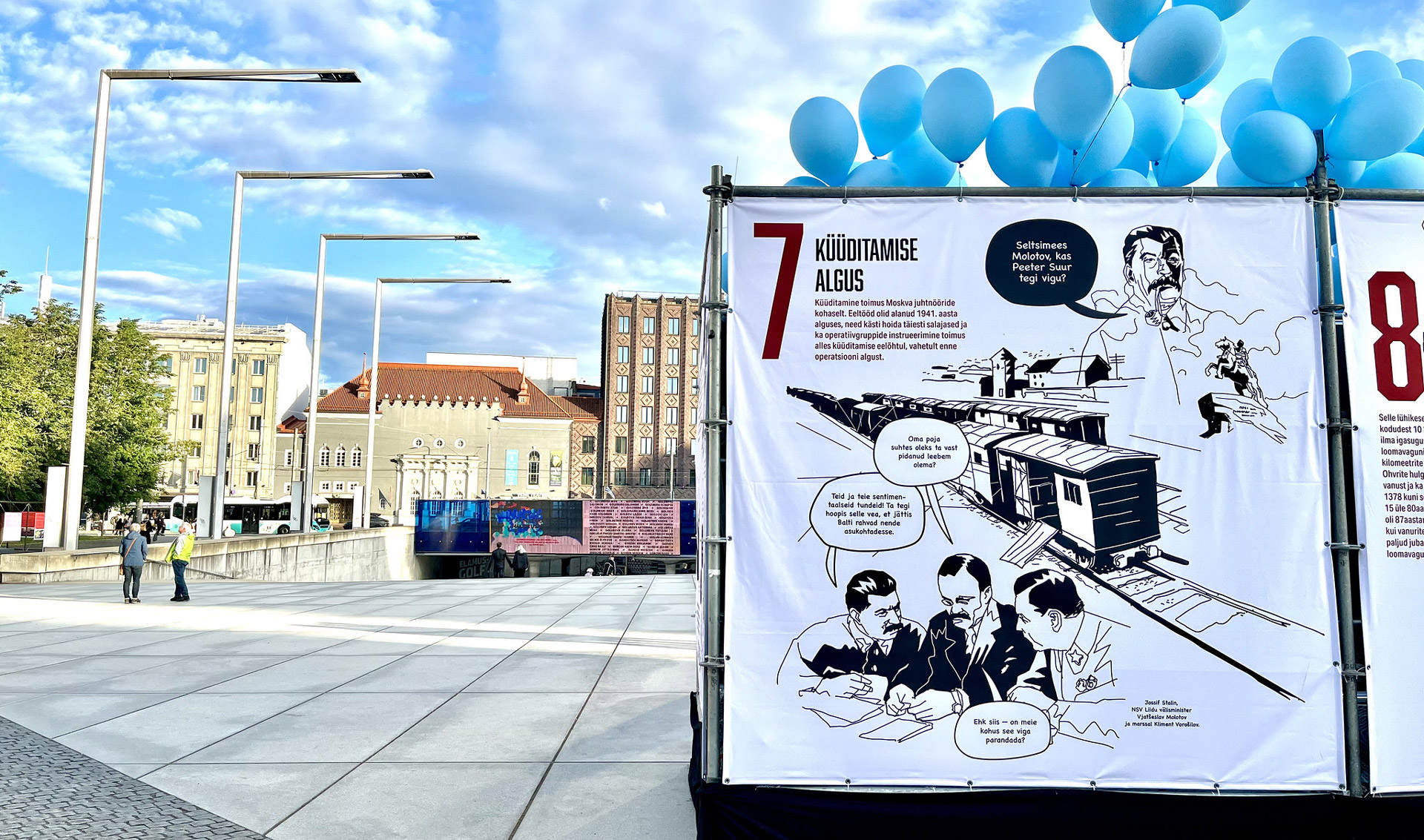
INSTALLATION "WAGON OF TEARS"
The "Wagon of Tears" installation is inspired by the cattle cars used by the Soviet regime to deport people from Estonia to remote regions of Russia. On the sides of the wagon, a graphic novel provides a concise and visual overview of the tragic events of the June 14, 1941 deportations.
The Estonian Institute of Human Rights Institute's picture story of the June deportation, along with its antecedents and aftermath, provides a strong and emotional portrayal of one of the darkest moments in Estonian history. The images, based on Veiko Tammjärv's historical photographs, are expressive and powerful, with the sparse and contrasting use of color enhancing the impression of the tragedy. Accompanying texts briefly and factually explain the historical background, helping to place the events in a wider context. In the comic, both the deporters and their victims, including well-known historical figures and ordinary people caught in the wheels of history, are given a voice.
The picture story of the June deportation can be seen at Tammsaare Park in Tallinn from 14.06-16.06.2025
Graphics: Veiko TammjärvTexts: Estonian Institute of Human Rights
